Shiplap bathroom ideas – 12 ways to dress walls with paneling
Be inspired by these beautiful shiplap bathrooms, from classic coastal looks to rustic farmhouse schemes

- 1. Create a classic coastal look with white shiplap
- 2. Use shiplap in a modern farmhouse bathroom
- 3. Embrace modern rustic style
- 4. Bring texture to a neutral scheme
- 5. Add drama with black shiplap walls
- 6. Elongate a room with vertical shiplap paneling
- 7. Bring warmth with shiplap in rich earthy tones
- 8. Use shiplap to bring definition to large bathrooms
- 9. Continue shiplap onto the ceiling
- 10. Use shiplap as a timeless backdrop for kids' bathrooms
- 11. Pair shiplap with wallpaper
- 12. Use shiplap in a vintage scheme
- FAQs

Shiplap bathrooms are everywhere at the moment. Consisting of timber boards with rabbet joints which are overlapped to form a tight seal, shiplap paneling is thought to have originated in shipbuilding as a means to create watertight vessels, but historically it has also been used in the construction of homes, barns and cabins.
As a result, shiplap has become a signature feature of coastal and farmhouse interiors and is a wonderful way to capture the looks in a bathroom while also adding subtle character and interest.
Whether you're embarking on a new family bathroom design or just a small powder room, shiplap can look wonderful in any space and makes a versatile backdrop for many different bathroom schemes.
12 shiplap bathrooms the balance modern and rustic
Shiplap, along with similar forms of bathroom paneling like tongue and groove, has become a popular bathroom wall treatment in recent years, bringing both a practical and decorative element to interiors. It can be laid horizontally or vertically, and, although traditionally the planks would have tightly abutted one another, today it is often installed with a small nickel gap.
When painted with a water-resistant, wipeable paint finish, shiplap is a great way to protect walls from splashes and sprays, but it equally makes a brilliant device for bringing texture and interest to spaces that can sometimes feel stark and soulless. Depending on which way it is laid, shiplap makes a clever device for creating an illusion of space, plus it can also be a handy way to conceal all manner of unsightly imperfections, from uneven walls to messy plumbing.
From coastal bathrooms to traditional bathroom schemes, shiplap can provide a subtle foundation for a range of different schemes. Below we've rounded up an array of projects alongside expert advice from interior designers to help inspire you to embrace this bathroom trend.
1. Create a classic coastal look with white shiplap
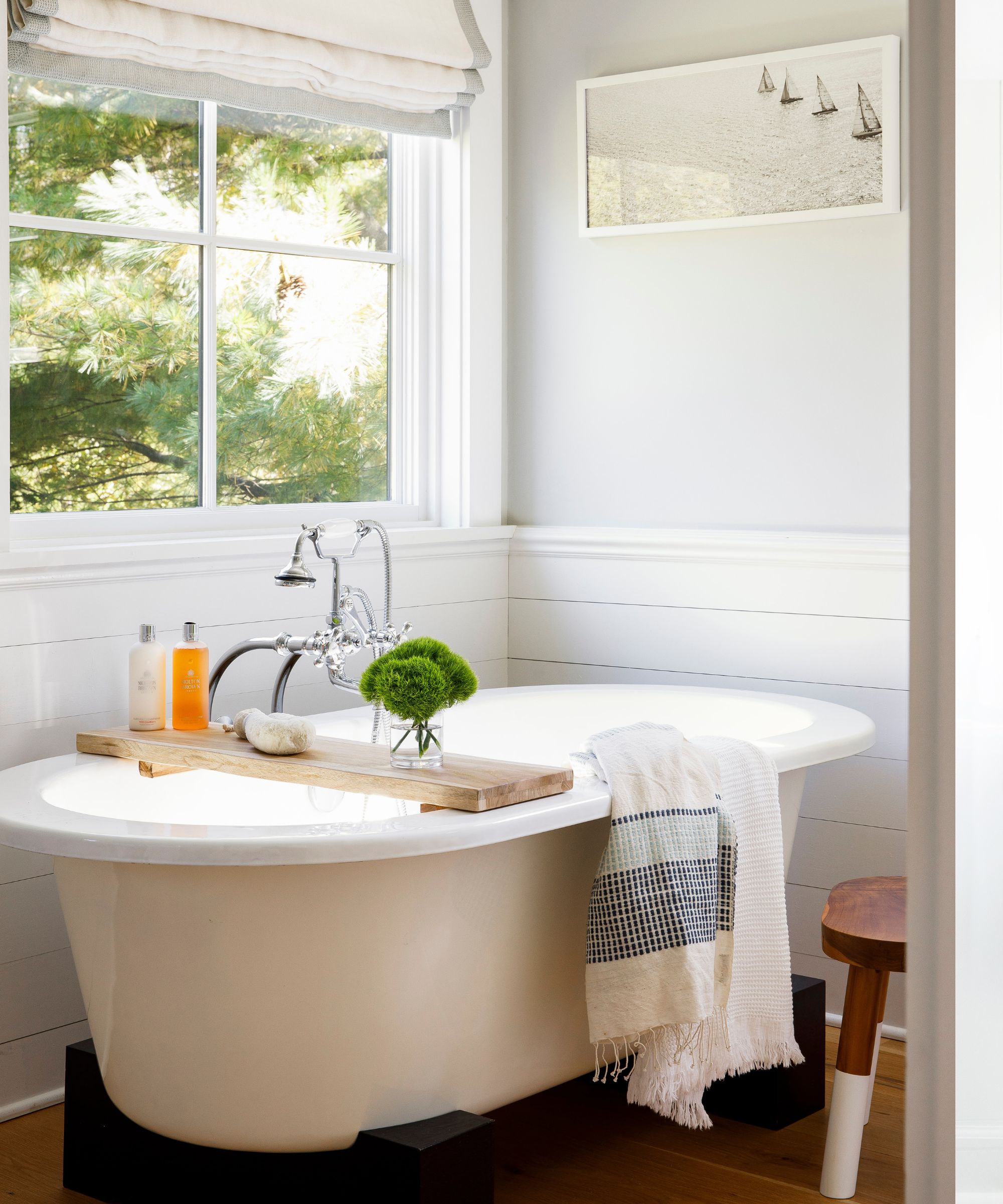
If you’re after a coastal look then you can’t go wrong with white horizontal shiplap paneling. ‘Shiplap lends a beautiful, coastal feel to a bathroom,’ says interior designer Allison Babcock who is renowned for her cool coastal schemes.
‘The clean lines and timeless charm come together seamlessly, creating a relaxing space that is both simple and inviting.’ To complement the look consider teaming shiplap with wooden furniture, nautical artwork, and linen hammam towels.
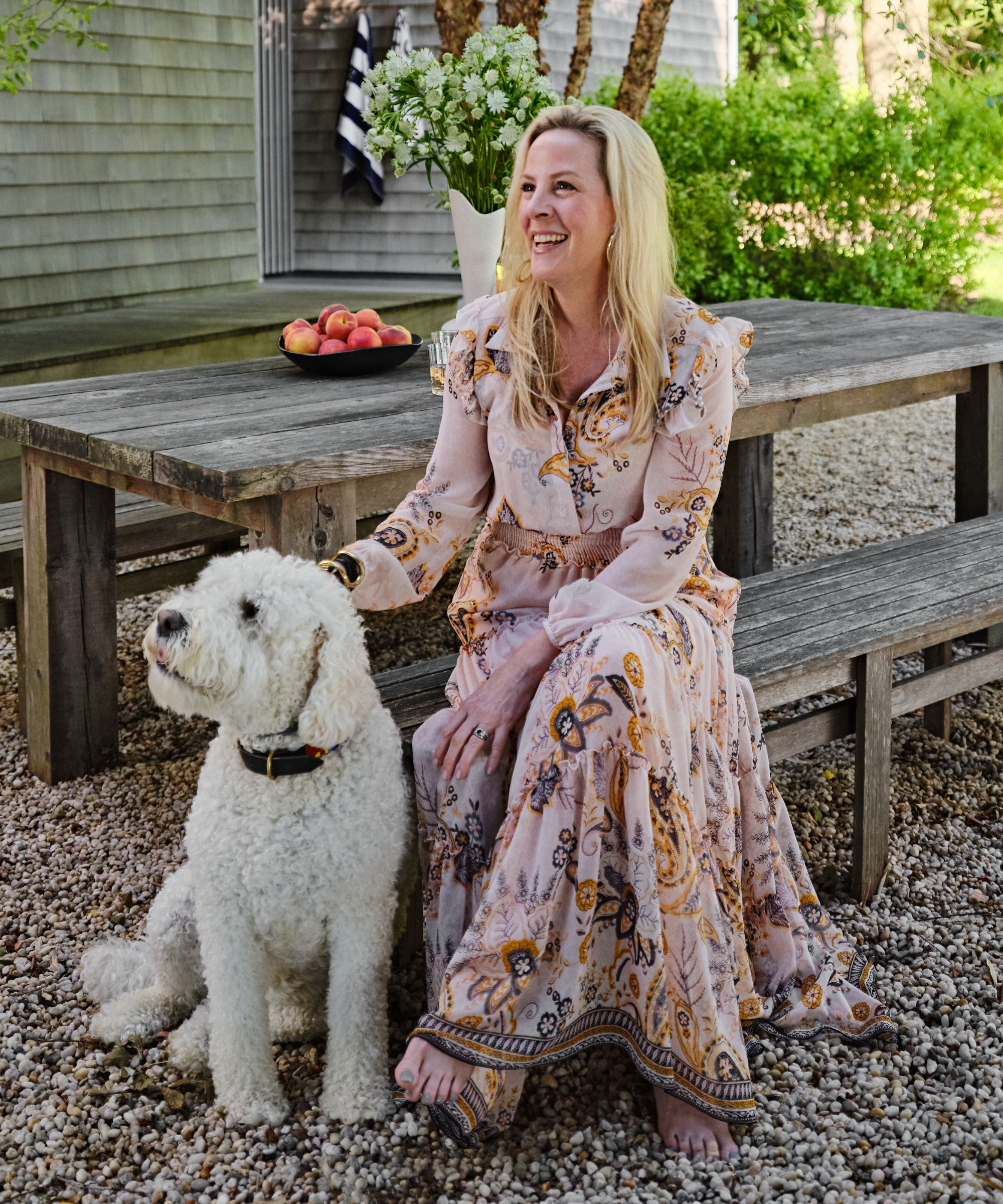
Allison Babcock is known for her sophisticated aesthetic: a modern sense of elegance that is fresh, crisp, and comfortable, imbued with warmth and enhanced by sumptuous textiles and organic materials. She and her team at Allison Babcock LLC have worked on a wide range of projects from coastal residences to renovated historic properties and modern urban residences. The firm collaborates with architects and builders to seamlessly integrate architecture and interior design.
2. Use shiplap in a modern farmhouse bathroom

Historically many farmhouse properties used shiplap within their construction and as a result, it's become a signature feature of the rustic farmhouse style. Here interior designer Christie Lewis used individual timber boards across the wall and ceiling and paired them with a classic timber vanity to capture the look.
'A butt joint shiplap application was utilized in this bathroom. Rather than using prefabricated shiplap sheets, 2"x 4" boards were laid beside each other. No two boards are the same and we embraced their knots, gaps, and imperfections,' says Christie.
'We wanted the home to feel like an old country farmhouse. Shiplap was traditionally used to provide sheathing between the exterior and the framing. Often in old homes if you remove the sheetrock, you will find such "shiplapped" walls. I love this bathroom because it feels truly authentic. It feels like the home has a legacy and has been there for hundreds of years.'
3. Embrace modern rustic style
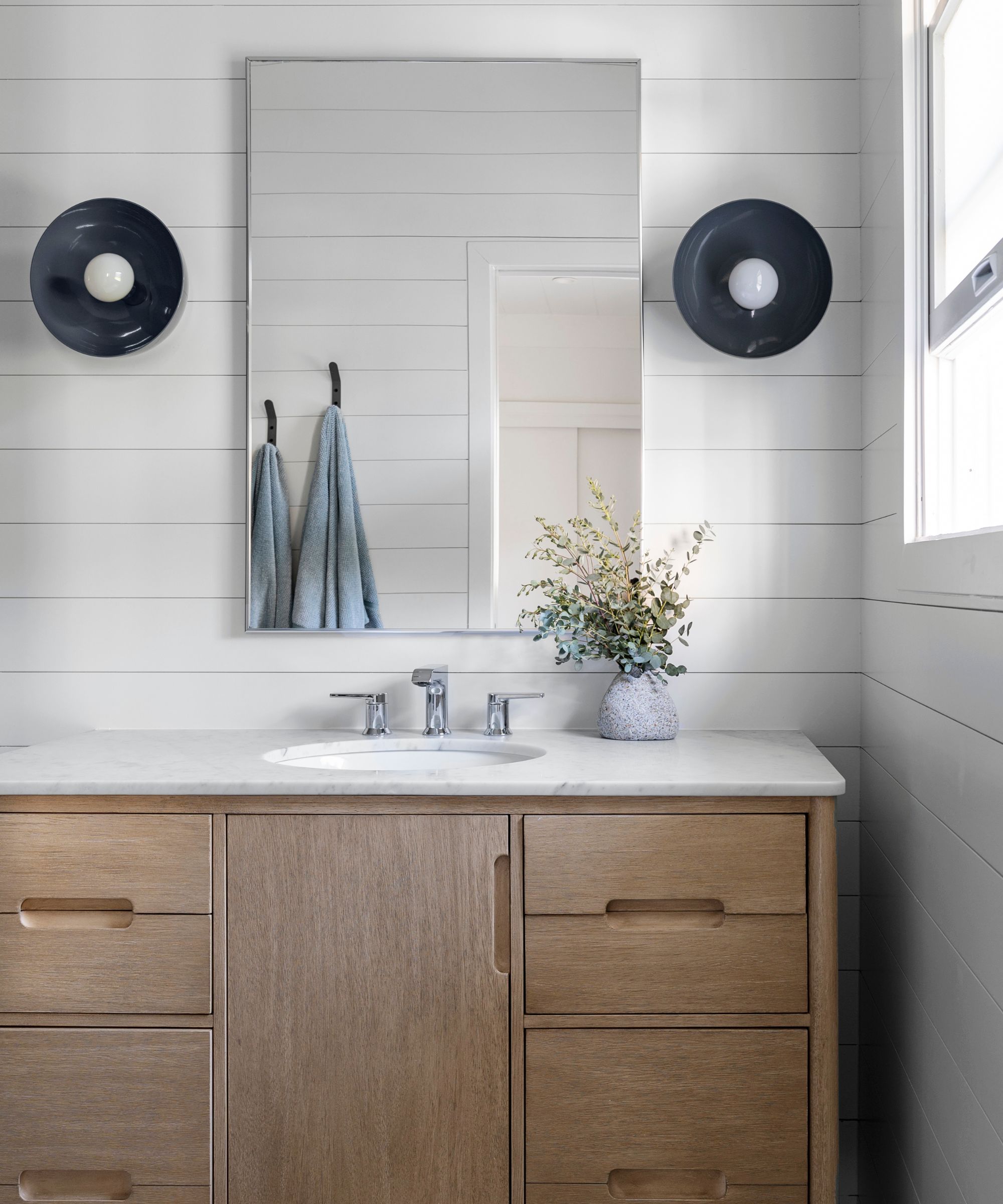
In this bathroom interior designer Amanda Barnes has paired white shiplap walls with a modern timber bathroom vanity topped with marble to create a chic yet rustic look perfect for a ranch-style property.
'We put shiplap in this space to add interest and incorporate a design element from the rest of the home,' says Amanda. 'The bedroom that goes with this bathroom has similar paneling on the ceiling. The shiplap is represented in many rooms in this house. While this bathroom feels fresh and modern, it pairs beautifully with the recently renovated ranch-style home that maintains many features it was originally built with. The paint color is Benjamin Moore's Vanilla Milkshake.'
4. Bring texture to a neutral scheme
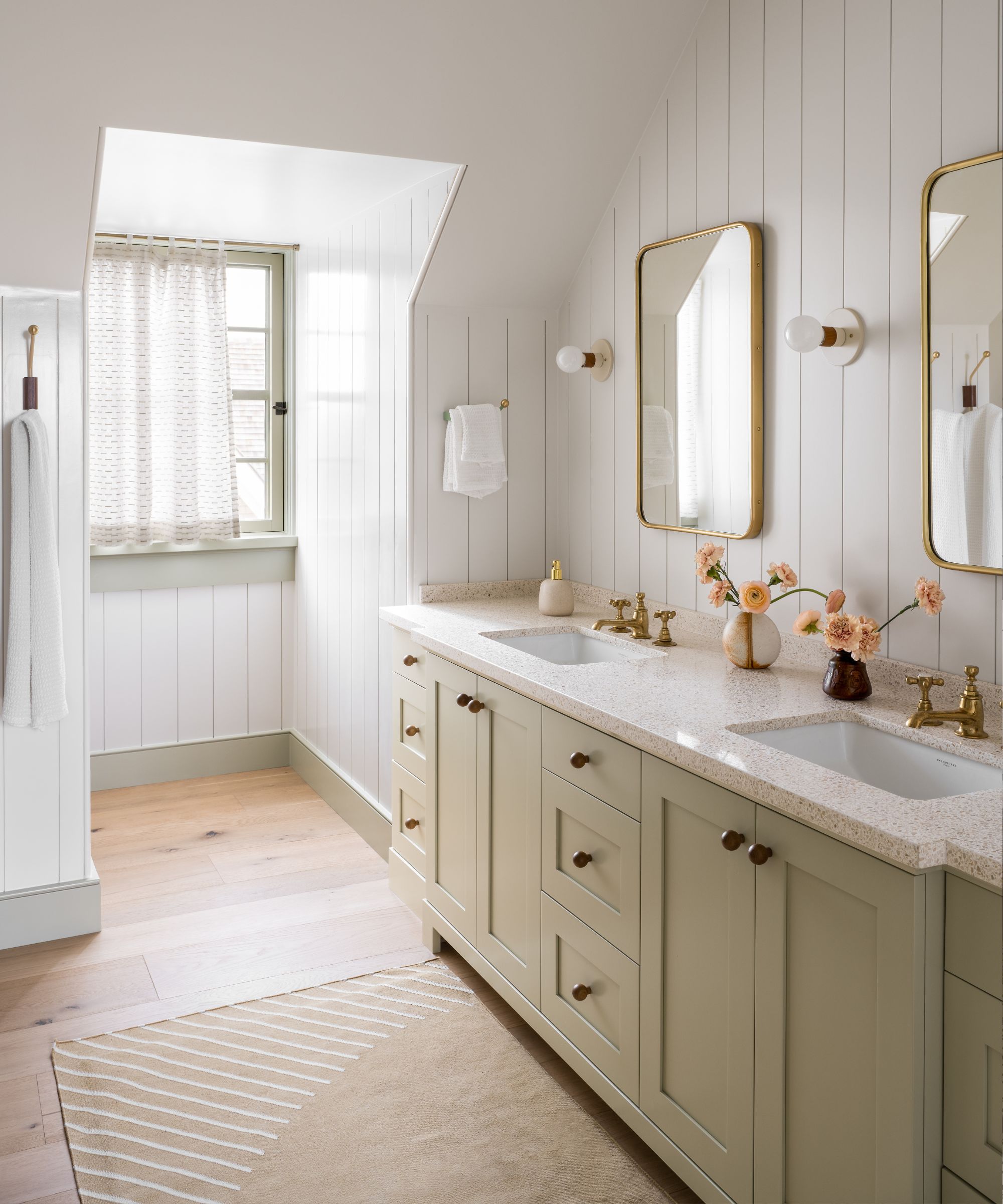
White bathrooms are a safe option if you're looking to create a bathroom that feels airy and uplifting, but they can easily lack character if you're not careful. Installing shiplap wall paneling is a great solution as it creates subtle interest while keeping bathrooms feeling bright and spacious.
'We opted to keep the palette of this bathroom light, clean and airy, but we still wanted the white walls to have some dimension and accentuation. Shiplap seemed the obvious choice for this, and helped us to create a space that feels both modern and timeless,' explains interior designer Cortney Bishop.
5. Add drama with black shiplap walls
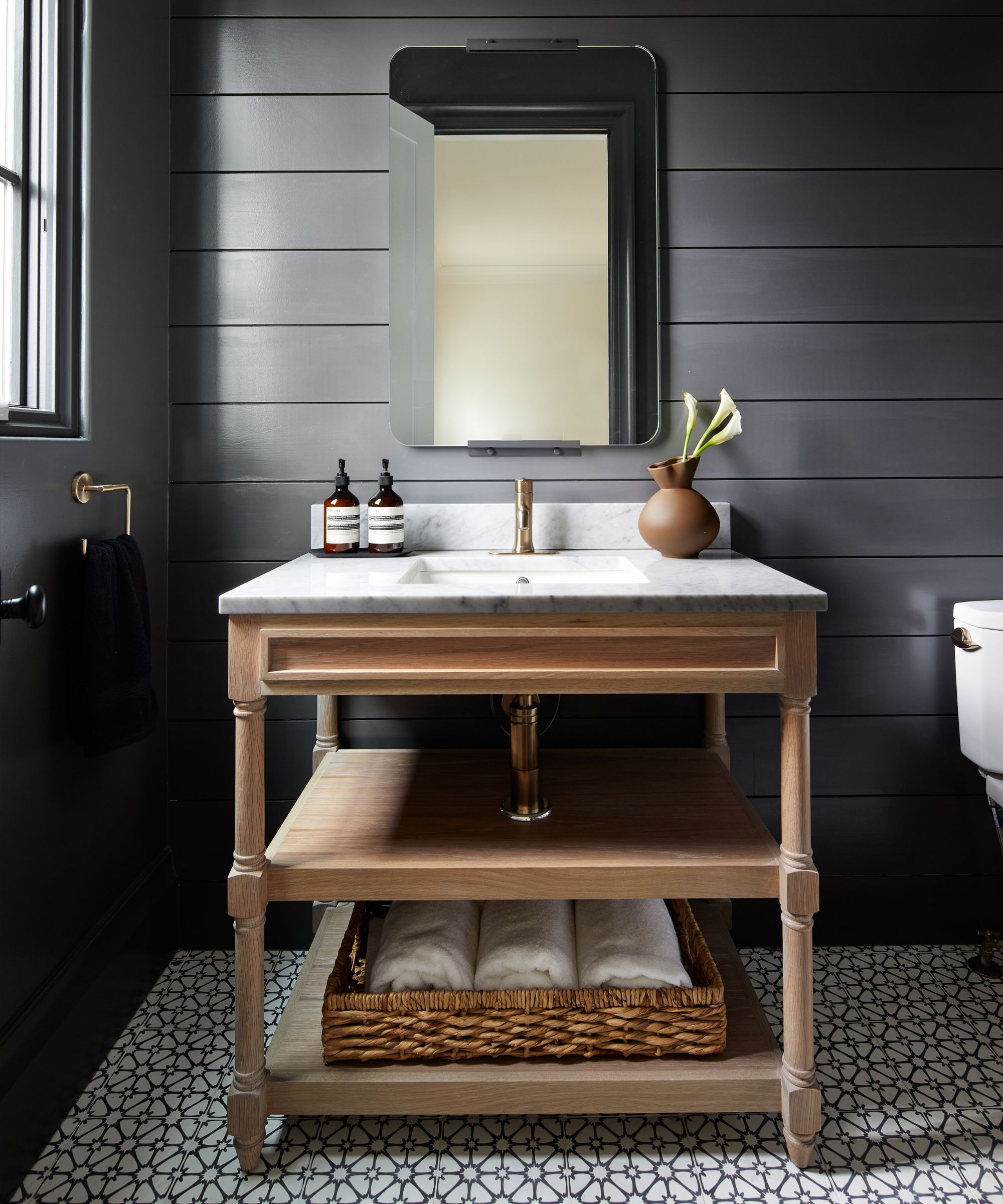
For a head-turning look, why not give a traditional coastal bathroom a striking twist by painting shiplap in a dramatic, dark paint color? For those looking to embrace a monochrome or black bathroom scheme, shiplap is a great way to add subtle depth and interest to prevent the space from feeling cold and stark.
'Shiplap is an easy and effective way to add interest with texture. It is a timeless design element that can complement a range of aesthetics from farmhouse to modern depending on its treatment,' explains Ellie Mroz, interior designer and founder of Ellie Mroz Design.
6. Elongate a room with vertical shiplap paneling
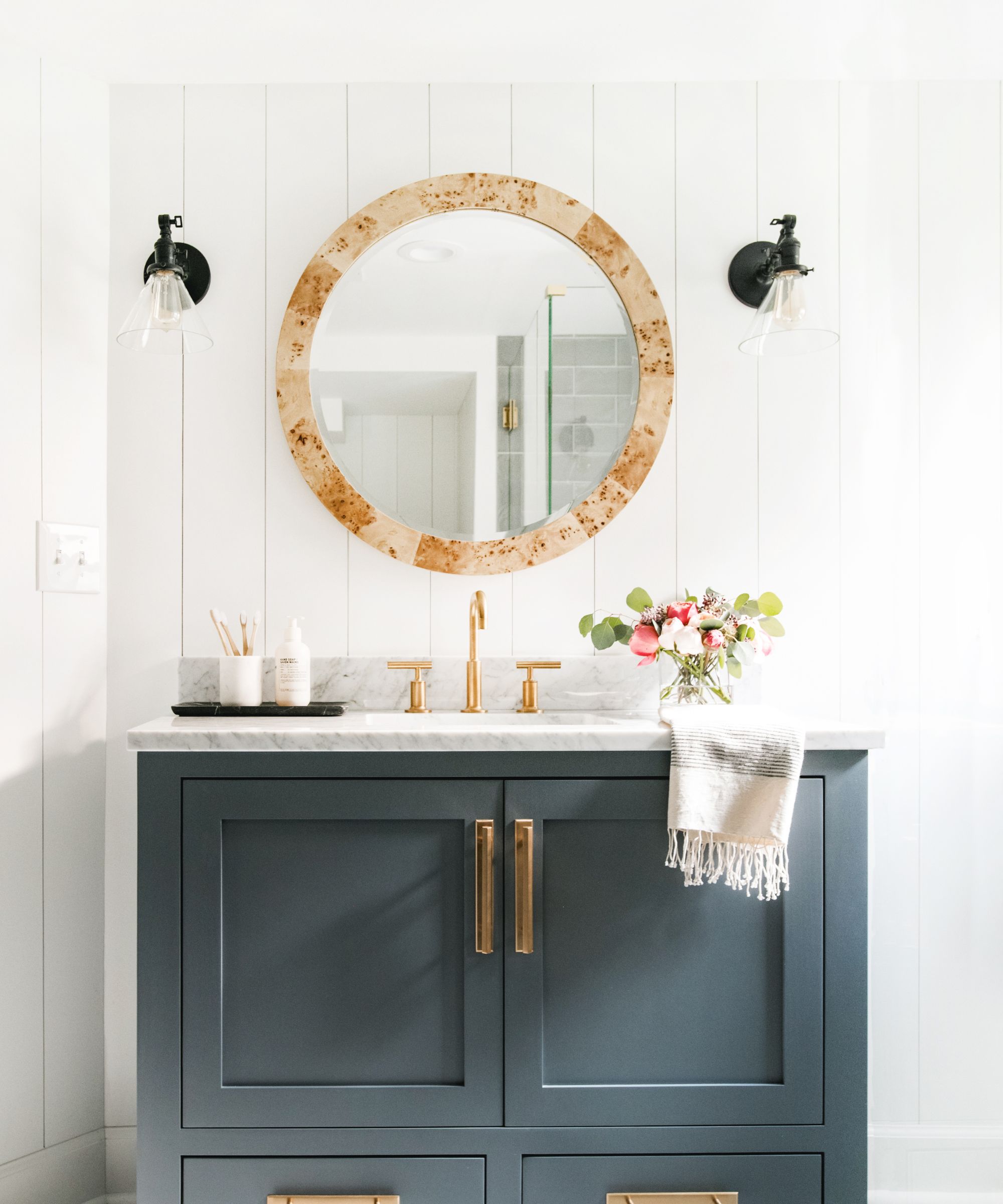
Installed vertically, shiplap paneling can serve as a clever visual trick to make small bathrooms feel taller and larger than they appear. It can also be a handy way to conceal pipes, plumbing and unsightly fixtures.
'This bathroom was in a basement and the ceilings were a bit low so I decided to do vertical shiplap to make the ceilings feel a bit taller,' explains Emily Ruff, founder and principal designer at Seattle-based design studio Cohesively Curated.
'There is also a wall panel that goes into the water heater closet that can only be accessed from this bathroom so we wanted to hide that removable wall panel between the shiplap.'
7. Bring warmth with shiplap in rich earthy tones
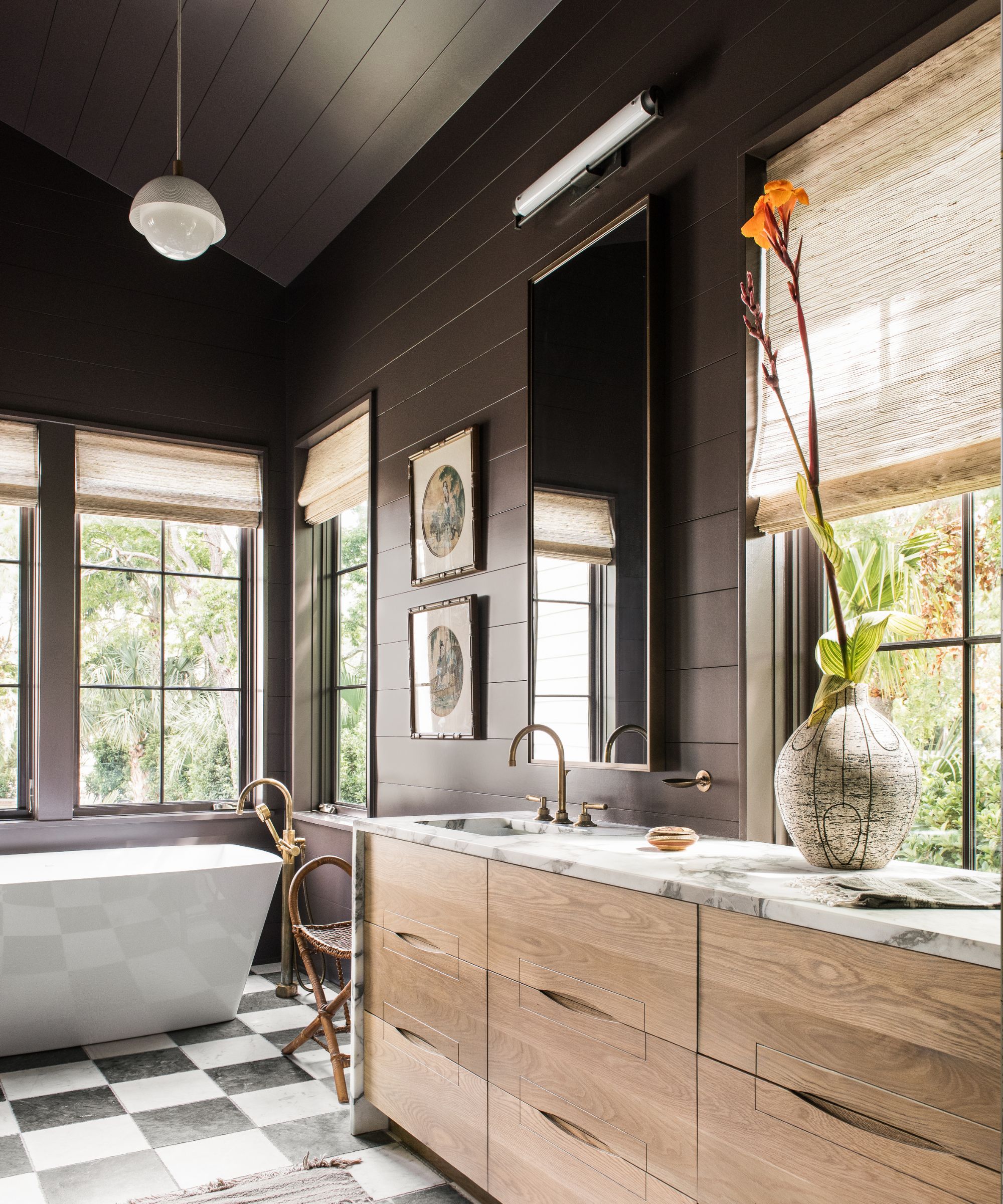
With their multitude of stark white ceramics and hard surfaces, bathrooms can have a tendency to feel cold, but this needn’t be the case - they can be as inviting as other rooms in the home, as demonstrated in this beautiful luxury bathroom by Cortney Bishop Design.
Here Cortney's use of shiplap paneling in a rich warm brown color is a striking design choice which helps bring the walls in to create a cocooning environment. The addition of natural wood and stone through the marble-topped vanity and the patterned floor helps bring further warmth and texture.
'We went for drama in this bathroom, using dark shiplap boards not only on the walls but also extending them to the ceiling, draws the eye upward and prevents the space from feeling too confined by the bold color choice,' explains Cortney Bishop.
8. Use shiplap to bring definition to large bathrooms
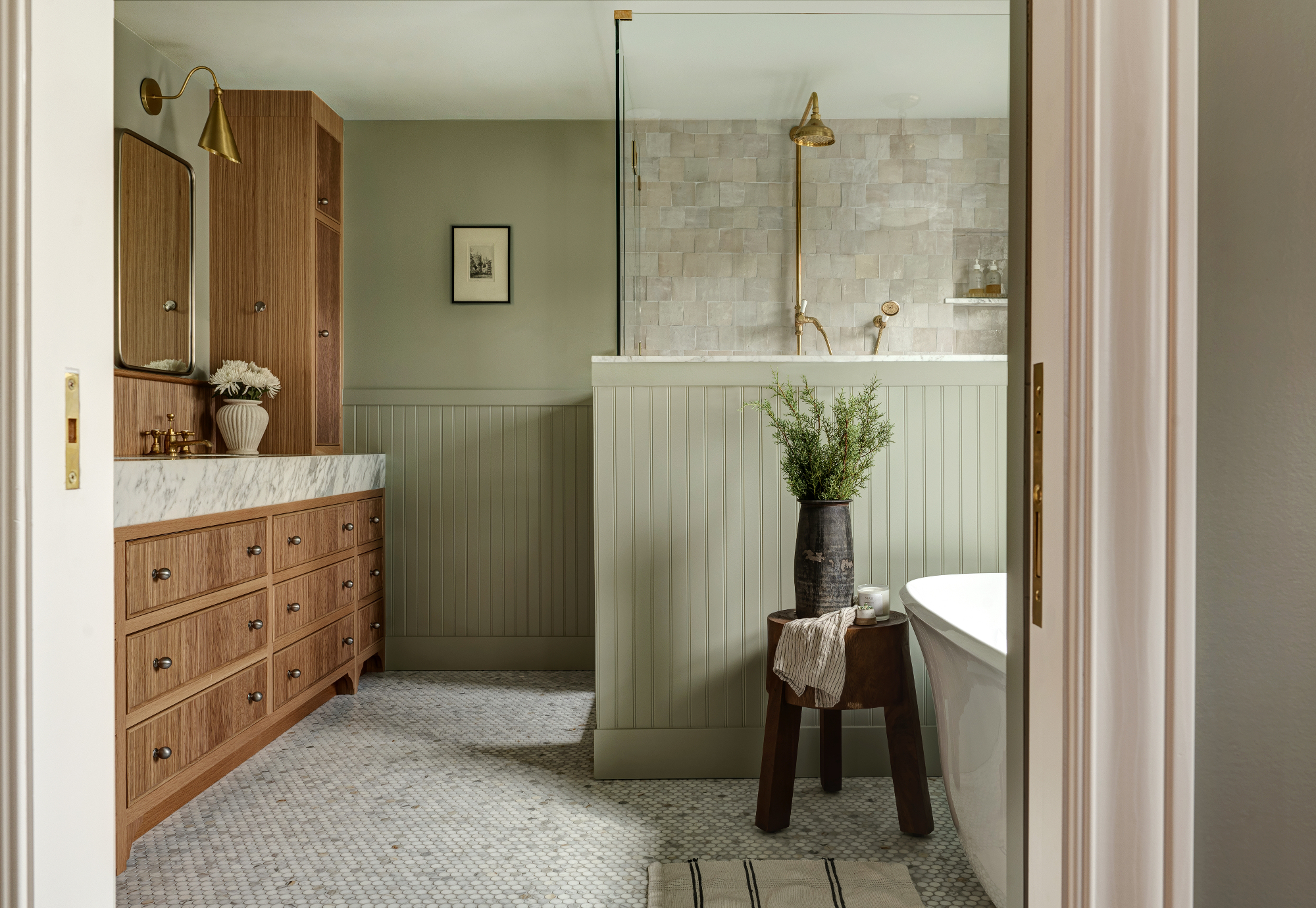
Shiplap can serve as a clever visual device for bringing structure and definition to a space. In this large bathroom, interior designer Jessica Nelson introduced wainscot paneling to help bring the space together and create a seamless look.
‘We chose the beadboard paneling for this primary bathroom for added texture and dimension,' explains Jessica Nelson, founder of Seattle-based Jessica Nelson Interiors. 'This bathroom has a large footprint and we wanted some visual interest for the walls while not feeling too busy or distracting, so we opted for a calming sage green color. It also helped to create a continuous site line across the room with the vanity backsplash, the shower pony wall and the beadboard.’
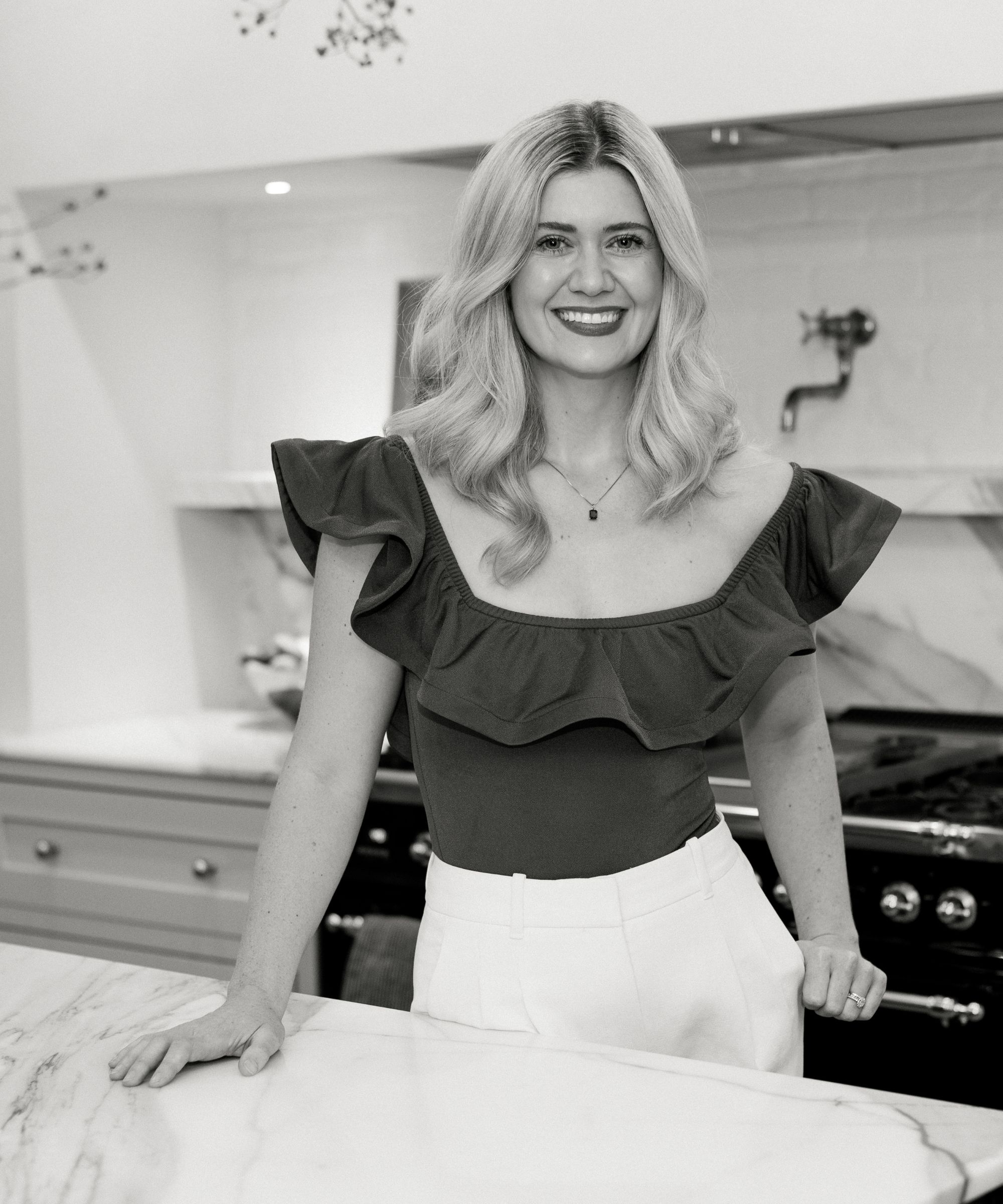
Seattle-based interior designer Jessica Nelson specializes in full-home models and rebuilds. Through her interior design studio she has transformed a variety of properties from modern apartments to large country farmhouses. With a focus on creating elevated yet liveable spaces, her interiors are comfortable, timeless and elegant.
9. Continue shiplap onto the ceiling

Small bathrooms with little light can be a challenge when it comes to decorating, as it can be difficult to know how to add character without overwhelming a space. Shiplap paneling makes a great solution as it adds subtle interest while keeping the space feeling light, as demonstrated here in this attic bathroom design by Emma Milne Interiors. By continuing the paneling onto the bathroom ceiling the vertical lines help lead the eye upwards to give the illusion of height.
'We decided to panel the entire attic level of this gorgeous Victorian villa to add cozy interest and subtle architectural detail,' says Emma Milne. 'It also works well for sound insulation, and is extremely hard-wearing which is especially important in higher spaces.’
10. Use shiplap as a timeless backdrop for kids' bathrooms
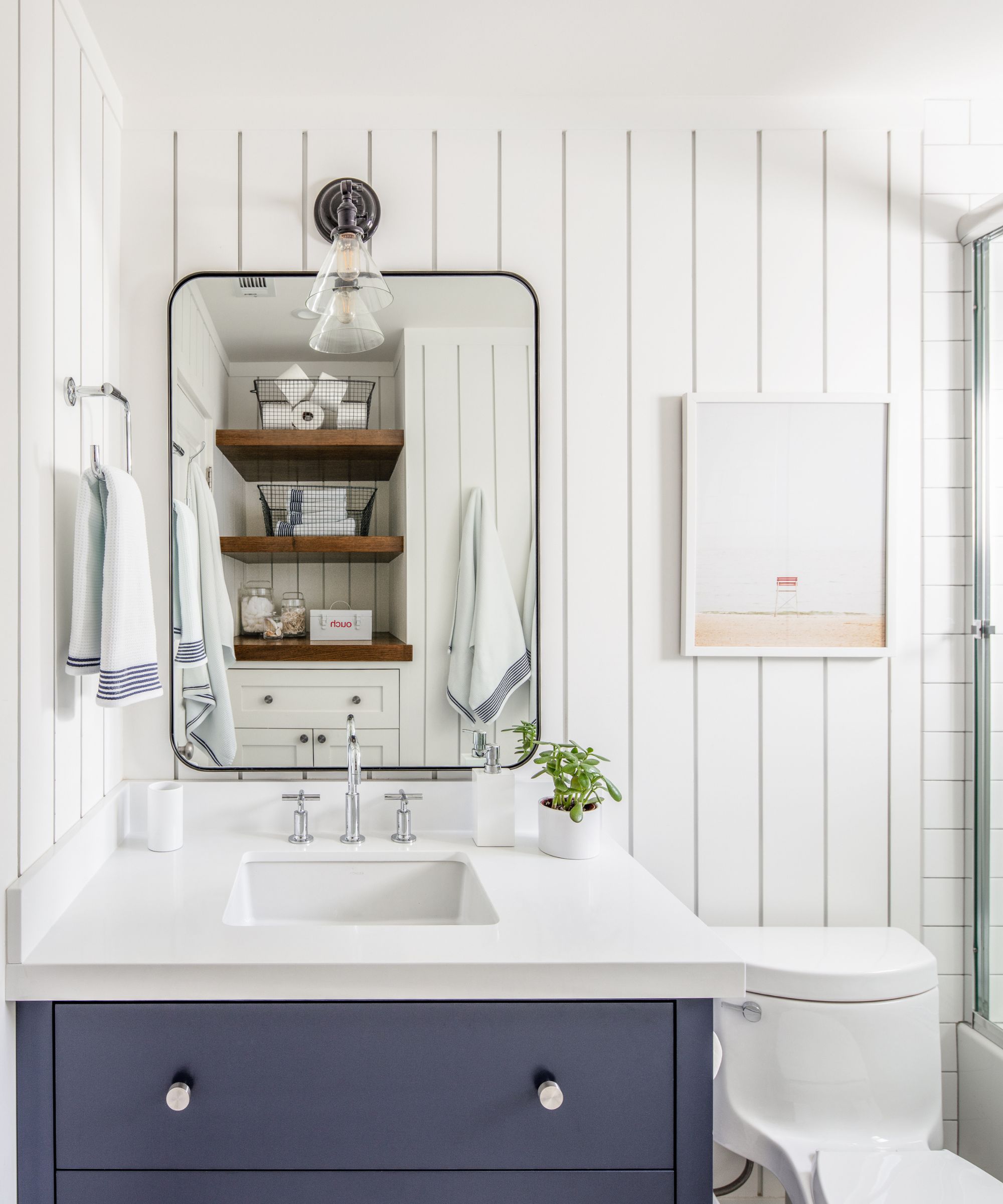
There's a lot to consider when it comes to kids' bathrooms, not only do the surfaces and fittings need to be robust for the inevitable wear and tear they will endure, but it's also worth considering neutral decor that kids can grow with.
Finished in a hardwearing paint finish, shiplap makes a practical choice for kids' bathrooms as it protects the wall from splashes and can easily be wiped clean. It's also a lot cheaper than tiles which might be a consideration if you are planning to change the decor later on; after all, there's no point investing in expensive stone tiles if the function of the room may change in a few years.
'Adding shiplap to a kids' bathroom instantly adds charm and durability, outdoing traditional walls against wear and spills,' explains Kriste Michelini, founder of Kriste Michelini Interiors. 'Its cozy, timeless vibe creates a playful atmosphere that's easy to maintain. Shiplap pairs well with classic tiles, beautiful lighting, and colorful vanities, offering versatile options and lasting style.'
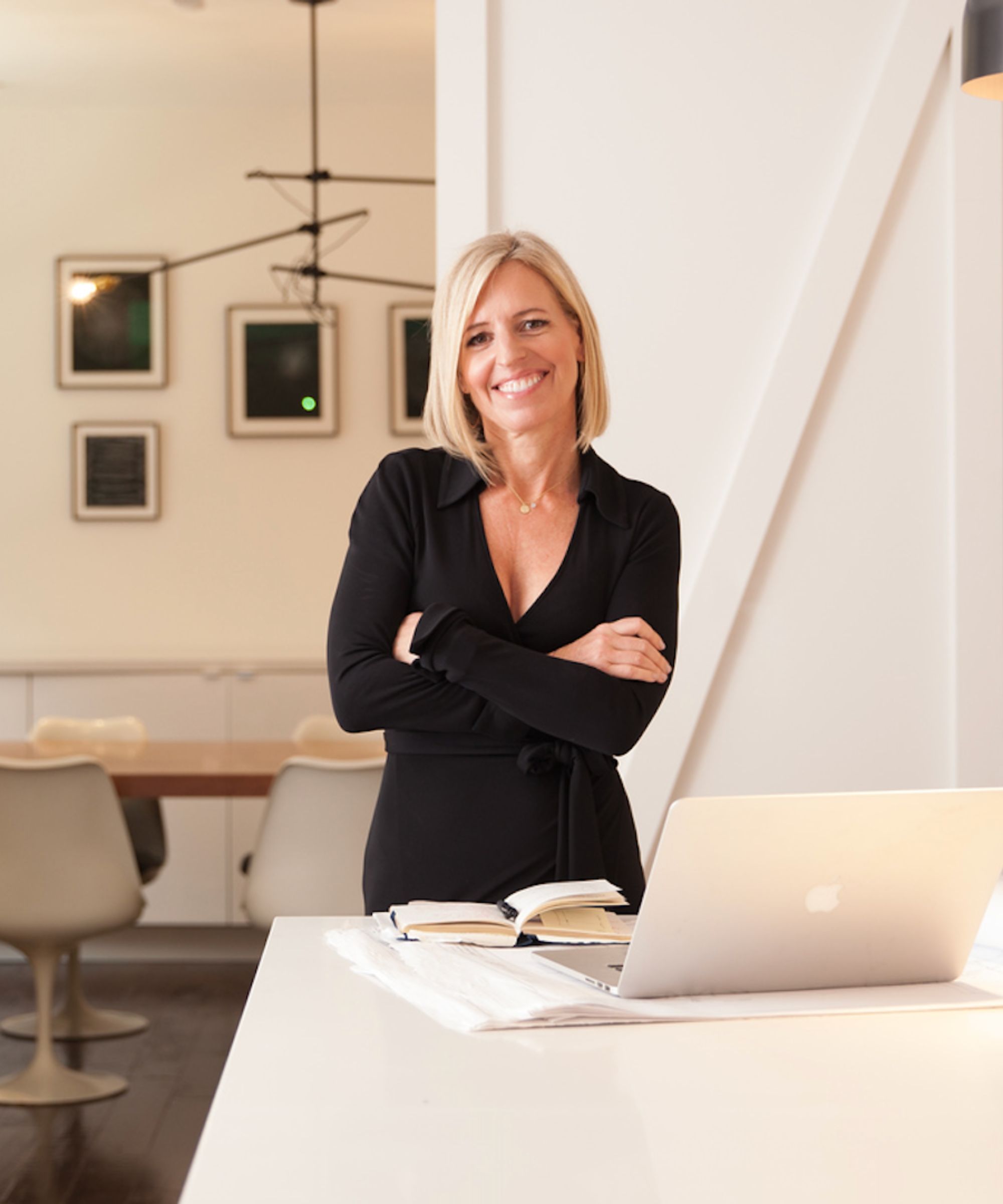
San Francisco-based interior designer Kriste Michelini founded her interior design studio and KM Home shop with a passion for crafting inviting spaces and is known for blending modern and classic architecture to bring a timeless, warm style. With a background in software and real estate, Kriste offers a unique business perspective in luxury design, focusing on disciplined design, efficient project management, and holistic beauty. Her team oversees all phases of the design process, from initial concept and space planning through to installation, and beyond.
11. Pair shiplap with wallpaper
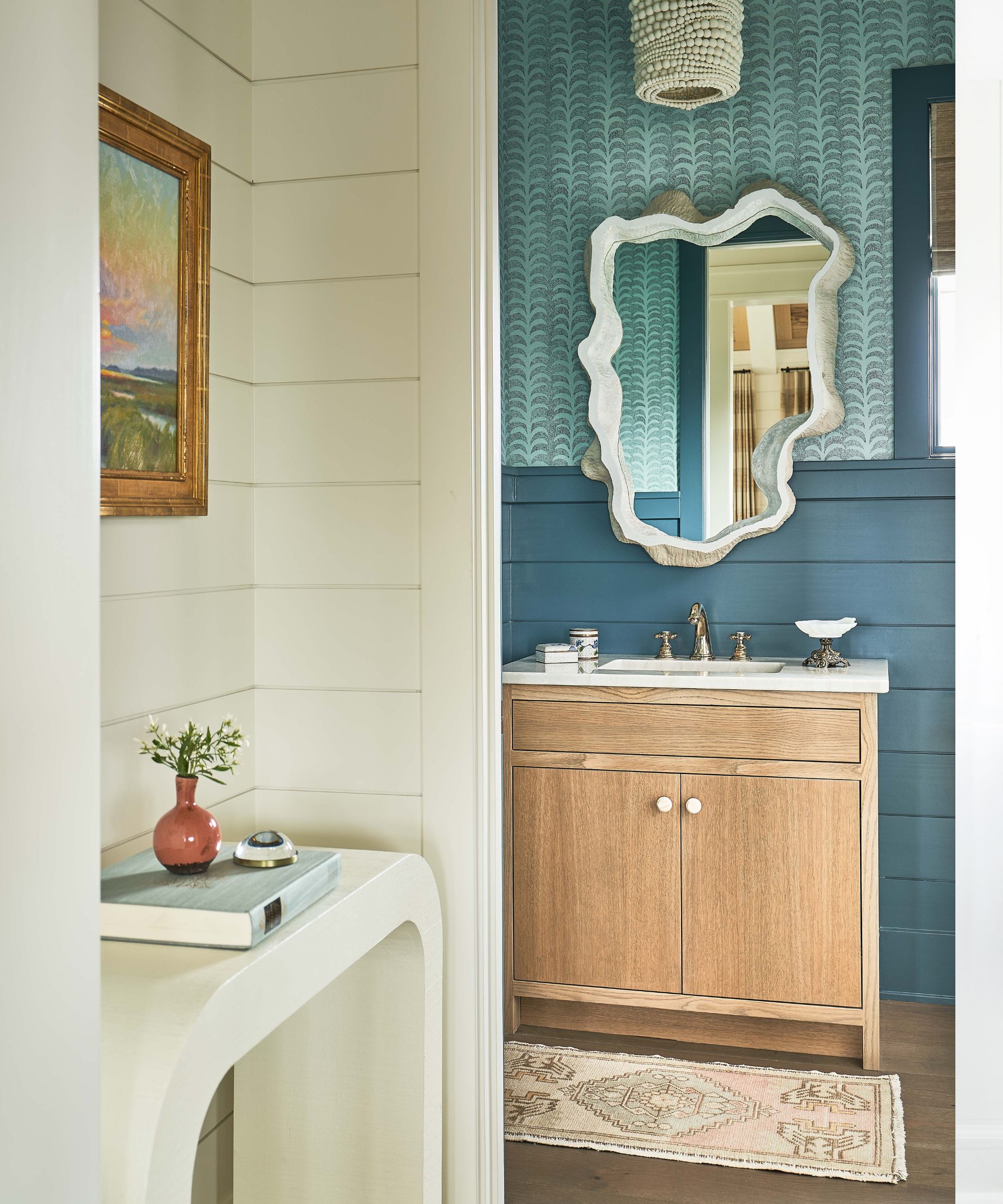
Pairing paneling with bathroom wallpaper as part of a bold and colorful scheme is a classic look we often see in cloakrooms and powder rooms - it brings an element of surprise when set off a neutral hallway and makes a fun talking point with visitors. Used wall-to-wall, wallpaper can be overwhelming, but pairing it with paneling in a complementary color can help to tone down the look whilst also offering protection for the lower wall.
In this stylish space by Herlong Architects + Interiors, the horizontal paneling makes a fun contrast to the decorative vertical stripe of the wallpaper.
12. Use shiplap in a vintage scheme
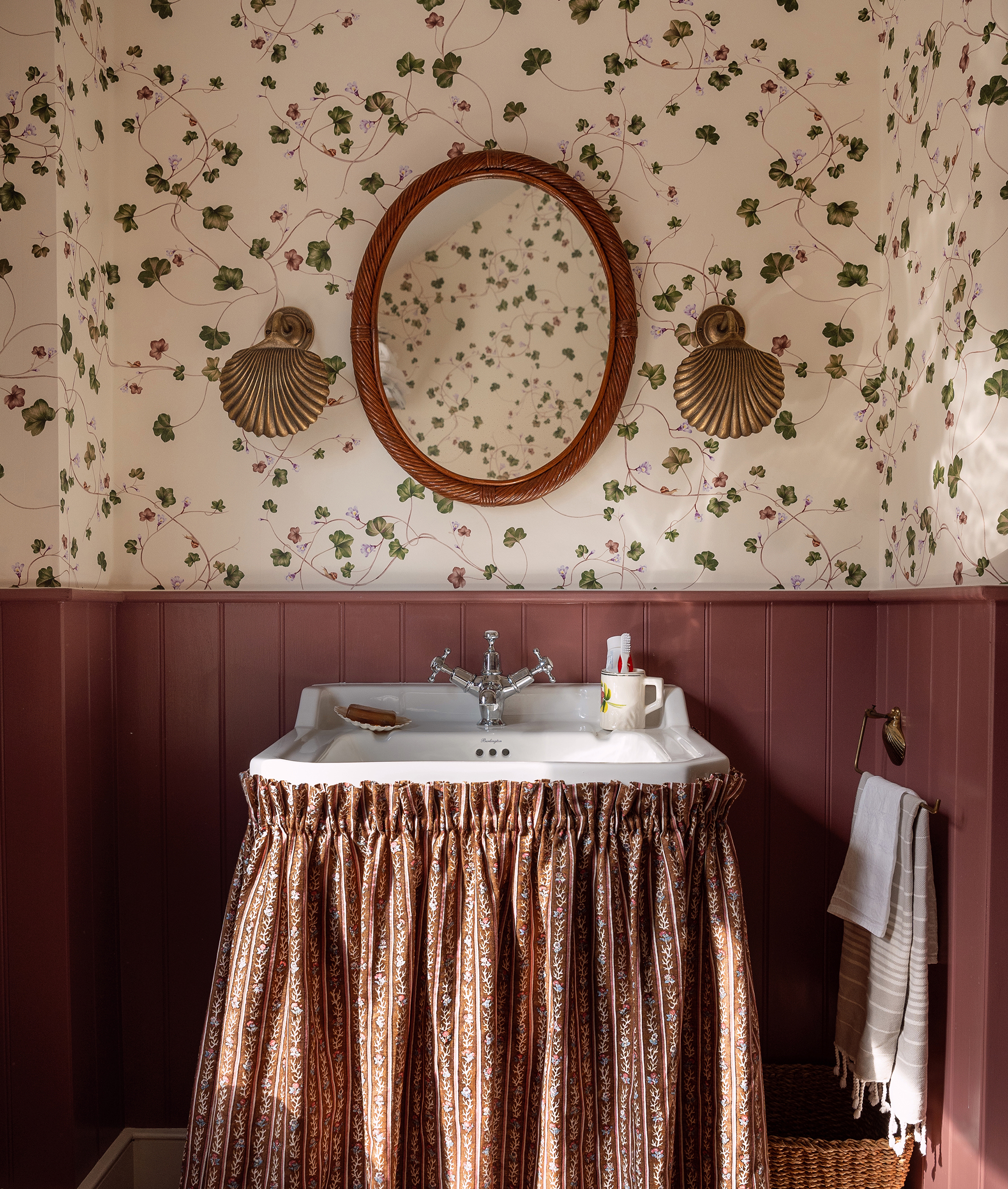
Shiplap bathrooms often conjure cool coastal spaces, but shiplap paneling can also make a fabulous backdrop for a vintage bathroom scheme. In this characterful space, the founder of Sharland England, Louise Roe, paired lower paneling painted in Edward Bulmer's Pompadour Natural Paint with wallpaper, burnished shell wall lights and a vintage-style sink valance to create a warm and inviting space full of pattern and texture. Painting the paneling in a deep, rich color also helps anchor the space.
‘I had incorporated paneling into the playroom of our old house, in a yellow paint by Edward Bulmer. I love how the effect brings warmth to a room and focuses the eye, so I wanted to try it in the bathroom in a darker color. I love the juxtaposition with the playful wallpaper.’
FAQs
Is it OK to use shiplap in a bathroom?
Shiplap can be a great wall treatment for a bathroom. Not only can it protect walls from splashes, it also brings decorative interest, texture and character to practical spaces that can often feel cold and clinical.
If you are considering installing shiplap in humid and wet areas like bathrooms, opt for moisture-resistant MDF boards - you can either buy individual boards or MDF panels with pre-cut grooves. When installing shiplap in bathrooms it is best to finish it in a water-resistant, wipeable bathroom paint finish formulated specifically for use on timber.
Is there waterproof shiplap for bathrooms?
Bathrooms are humid spaces so where possible use moisture-resistant MDF shiplap paneling as untreated timber can warp and rot if exposed to moisture.
Traditional shiplap paneling consists of timber boards with rabbet joints which are overlapped to butt tightly together with no gaps. It's worth noting that this classic style of shiplap paneling will require face nailing, which can be a problem in moist environments as the nails may rust. Alternatively, opt for a style of shiplap that can be blind nailed so that the nail is not exposed, such as shiplap with a nickel gap.
Tongue and groove paneling also makes a practical alternative. The interlocking tongue and groove joint means the timber planks can be slotted tightly together and blind nailed.
Sign up to the Homes & Gardens newsletter
Design expertise in your inbox – from inspiring decorating ideas and beautiful celebrity homes to practical gardening advice and shopping round-ups.

Pippa is a contributor to Homes & Gardens. A graduate of Art History and formerly Style Editor at Period Living, she is passionate about architecture, creating decorating content, interior styling and writing about craft and historic homes. She enjoys searching out beautiful images and the latest trends to share with the Homes & Gardens audience. A keen gardener, when she’s not writing, you’ll find her growing flowers on her yard for styling projects.
-
 Kyle Richards' unconventional styling encourages you to use shelves for more than books – it's a fresh twist on 'bookshelf wealth' for 2025
Kyle Richards' unconventional styling encourages you to use shelves for more than books – it's a fresh twist on 'bookshelf wealth' for 2025The Real Housewife of Beverly Hills intentionally decorated her shelf with ceramics and accessories that have enough room to breathe, and designers love her look
By Hannah Ziegler
-
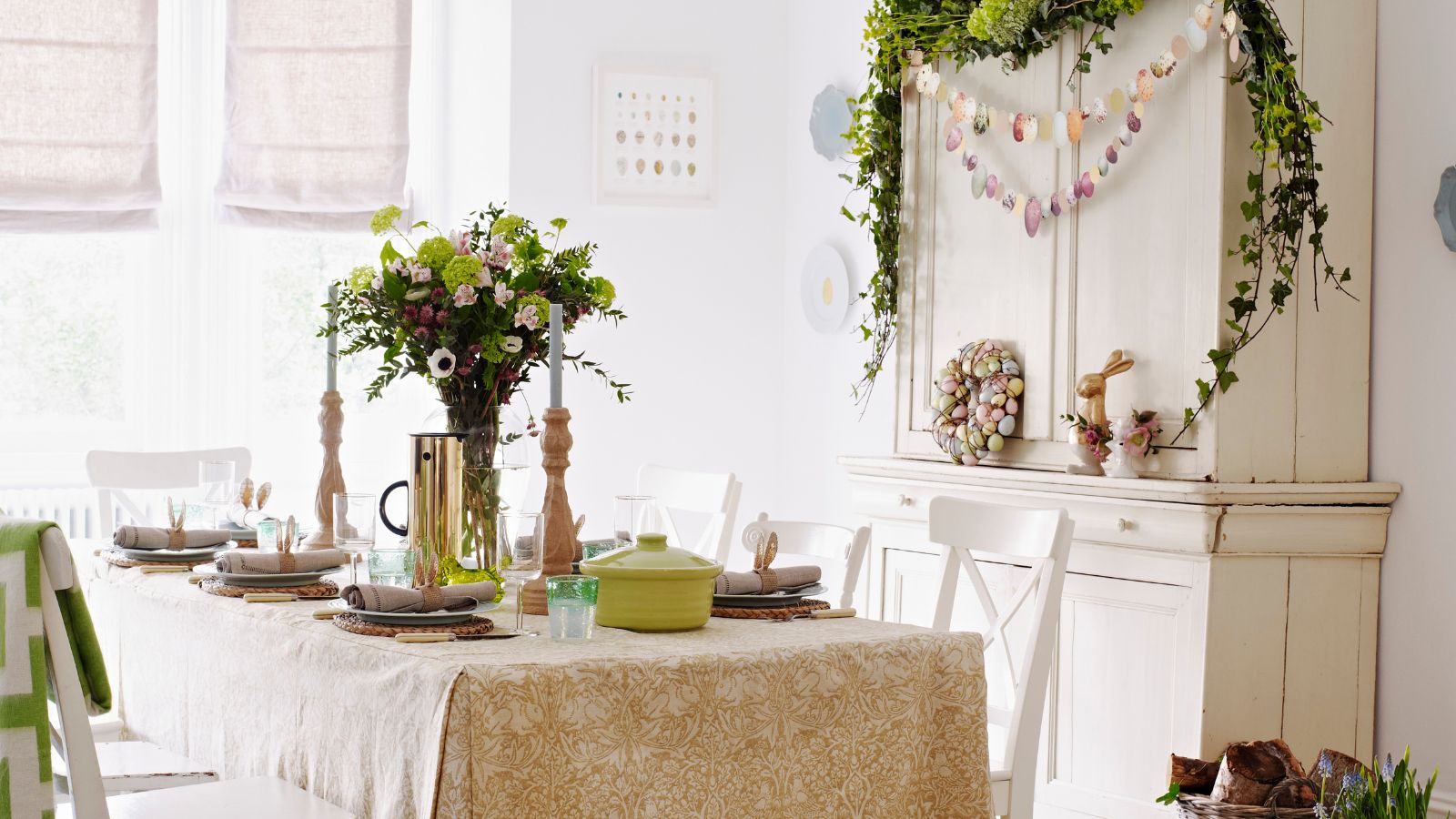 These five easy Easter place name ideas are too pretty not to try - here’s how to make them ready for Easter
These five easy Easter place name ideas are too pretty not to try - here’s how to make them ready for EasterThese easy Easter place name ideas are so simple that anyone can recreate them in time for the Easter weekend to bring personal touch to holiday hosting
By Katrina Harper-Lewis